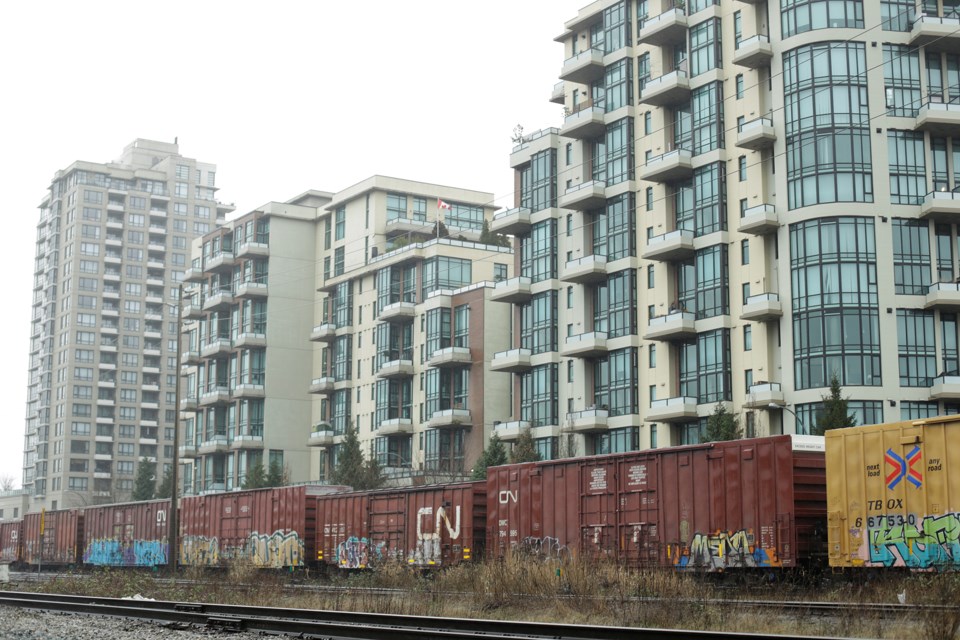A recent train fire in Port Coquitlam is prompting a review of potential risks and responses in New Westminster.
Part of Lougheed Highway was closed to traffic for several hours on the night of Jan. 22, after a fire started when a tanker truck carrying ethanol collided with a locomotive.
“Instant fireball,” said Coun. Chuck Puchmayr, chair of the city’s railway community advisory panel.
Puchmayr and New Westminster Fire Chief Tim Armstrong subsequently spoke to officials involved with the incident and will discuss the matter at the advisory panel’s next meeting.
“It should be noted that we have developed a more direct and responsive incident command and attack to these situations,” Puchmayr said Puchmayr. “It is also important to note that the Port Coquitlam incident occurred at an area where product is being transferred between road tankers and rail cars which does not happen here.”
While no one was injured in the incident, the fire burned for hours.
In response to the fire, Puchmayr said New Westminster will set up a briefing with officials from Southern Rail so everyone is “really clear” on what happens in New West in the event of an incident involving trains.
“It’s massive. It’s a major international rail carrier, and it’s a major transfer point of cargo,” he said of the CPR yard in Port Coquitlam. “Ours is not insignificant either because we have four rail companies, three delivering to Southern and then Southern taking it from there.”
New Westminster, said Puchmayr, has a different way of doing things when there are incidents on the tracks.
“It’s a little bit different with CP Rail. They sort of like to contain things on their sites and have jurisdiction, and we’ve established a different protocol in New West. All the railways agree we would lead the incident command,” he said of the city. “We are the first ones there, so we would take control and we would have a joint incident command, not two separate ones. We already have, I feel, a better system. I am more comfortable with that system.”
Puchmayr said the city will also get an update on the chemicals and products that are moving through New Westminster. He said the fire chief is made aware of all the chemicals passing through the city and contents of rail cars are identified as well.
Puchmayr said the City of New Westminster identified a “real void” in its capacity to respond to a hazardous materials incident after the 2013 train tragedy in Lac-Megantic, Quebec, in which 47 people died when a runaway train rolled down a steep slope into town, derailed and exploded. At that time, Puchmayr said the city would have needed to call in first responders from another city.
“We realized with the volume of trucks that go through our city and the gridlock that occasionally happens that we had to have that capacity here. That’s when we started a hazmat response in New West, so now we have a fully trained hazmat conversant fire department, whereas prior to that we didn’t,” he told the Record. “We are miles ahead here. One of our bigger risks is an incident where thousands of trucks that go through our city every day, I think those pose even a greater risk of some kind of release of something from a rupture of a tank or a hazardous vehicle.”



